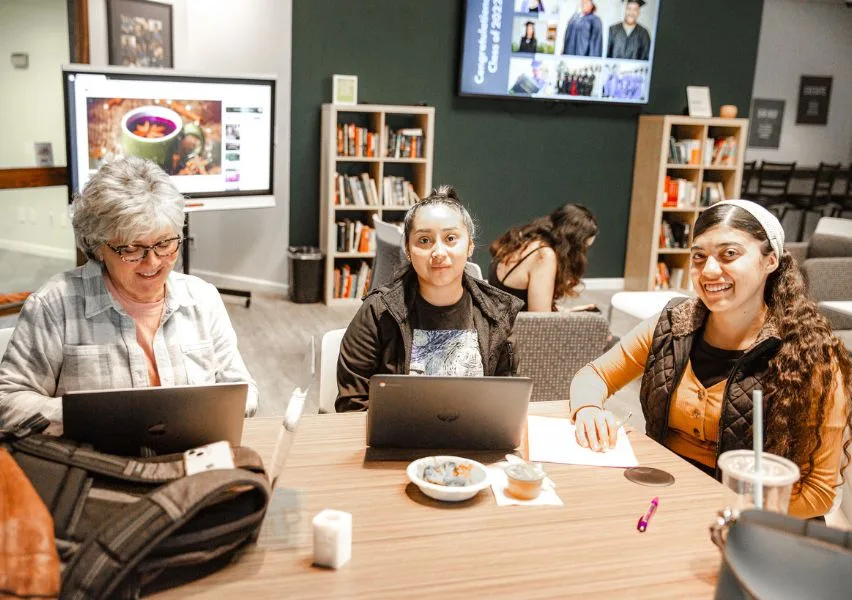Online School
Online Learning: A Solution to Coming Back from High School Setbacks

More and more often, online high school is becoming a common choice for students worldwide. In 2015, a worldwide study from ECAR showed that 49% of students had already completed a form of online learning1. The events of 2020 pushed forward the number of people ready to adopt online learning as an effective medium for learning. Those events challenged schools and families to adapt and incorporate remote learning into their teaching methods.
This shift highlights the potential of online schools to provide an alternative learning environment for students who were not successful in a traditional setting. Students who cannot succeed in a traditional school setting are often forced to drop out and search for an alternative. Online high school programs can now provide an alternative setting for students while still giving them the content they need to thrive.
Opening up access to course content
One factor driving this trend is the availability of technology to make online learning more accessible and convenient than ever before. The widespread availability of high-speed internet and mobile devices has given students the flexibility to learn from virtually anywhere they may be, especially as many public places now have WiFi available and necessary equipment can be loaned.

Also, online school is physically more accessible. Students don’t need to walk, bike, or drive anywhere. They can progress in their classes without catching a bus or paying for gas. Many feel less pressure to wear the right thing for school. Not only is this convenient, but it can also result in less money spent on an unnecessary item.
Making room for personal circumstances
Online schools can be a viable option for students who require alternative learning environments due to health issues, disabilities, or other extenuating circumstances that may make traditional schooling challenging. This flexibility can be particularly beneficial for students with responsibilities or schedules that don’t align with a typical school schedule. These include:
- Teens with full-time jobs
- Teens with children or siblings to care for
- Teens with disabilities
- Teens with certain medical conditions
- Teens in recovery
- Teens in detention or recently released
All of these pose unique learning challenges or specific academic goals that may not align with the structure of traditional schooling. For those in these situations, getting behind in school is a genuine concern because there is often not much that students can do to catch up.
Furthermore, online schools offer flexibility and customization that traditional brick-and-mortar schools may only sometimes provide. Students can learn at their own pace, access a wide range of resources and learning materials, and engage in personalized instruction tailored to their needs and learning styles.

Virtual learning platforms can accommodate various learning needs and provide the flexibility and support necessary for students to succeed academically, regardless of their ability to attend class in person. This arrangement makes the stress of missed classes or incomplete assignments a thing of the past.
Taking time to understand challenging subjects fully
Realistically, some but not all students are great at math or English. A student who excels in mathematics may breeze through algebraic equations while struggling with literary analysis in English class. Ensuring all students have mastered the content is impractical for some mid to large-sized classroom teachers. In a traditional setting, this student may feel pressured to keep up with their peers in both subjects, potentially falling behind in one or the other. Of course, not everyone can afford a tutor.
However, with the flexibility of an online learning platform, students can devote more time and attention to areas where they need additional support, ensuring a deeper understanding of the material and reducing the risk of falling behind.
One of the critical advantages of online school programs is the ability for students to progress at their own pace. Course content can be viewed and rewatched until the student understands the concepts. Online learning platforms allow students to move through coursework at a speed comfortable for them, especially for high school students with varying proficiency levels in different subjects.

A bonus for students of Grad Solutions is that they can receive extra help through tutoring from certified teachers. These teachers are available to students in person or online, substantially opening up the learning options. This live 1-1 tutoring support is a game-changer for many students who would have struggled otherwise.
Avoiding the need to restart or redo classes
Students who experience a setback, like a dropout, can keep their “place in line” by retaining the credits they already earned. Some online programs have unique structures, allowing students to maintain their progress.
At Grad Solutions, several program features enable enrolled students to provide their transcripts to recover credits, show their knowledge, and graduate faster. The prescriptive tests allow students to test out of course sections they already know and have mastered. Students can also use their hours worked in a job for elective credit hours. Receiving credit for work hours can speed up the time to graduation.
The acceptance and normalization of online schools can be attributed to their ability to provide flexible, accessible, and personalized educational experiences that meet the diverse needs of today’s students. For those who experienced a setback in traditional school, it can be an alternative path to a high school diploma. Bottomline —the right online school program can give students with divergent needs a path to graduation.
While traditional brick-and-mortar schools will continue to play a vital role in education, online learning offers a valuable complement and alternative increasingly embraced by students, parents, educators, and policymakers alike.
In the landscape of modern education, high school students encounter a variety of challenges that can impact their academic journey. From navigating complex medical conditions to managing work commitments, the traditional classroom setting may only sometimes provide the flexibility needed for students to thrive. However, with the rise of online school programs, students can tailor their education to fit their individual needs and get back on track with their education.
Sources
1Share of global students who have taken an online course in the past year from 2013 to 2015